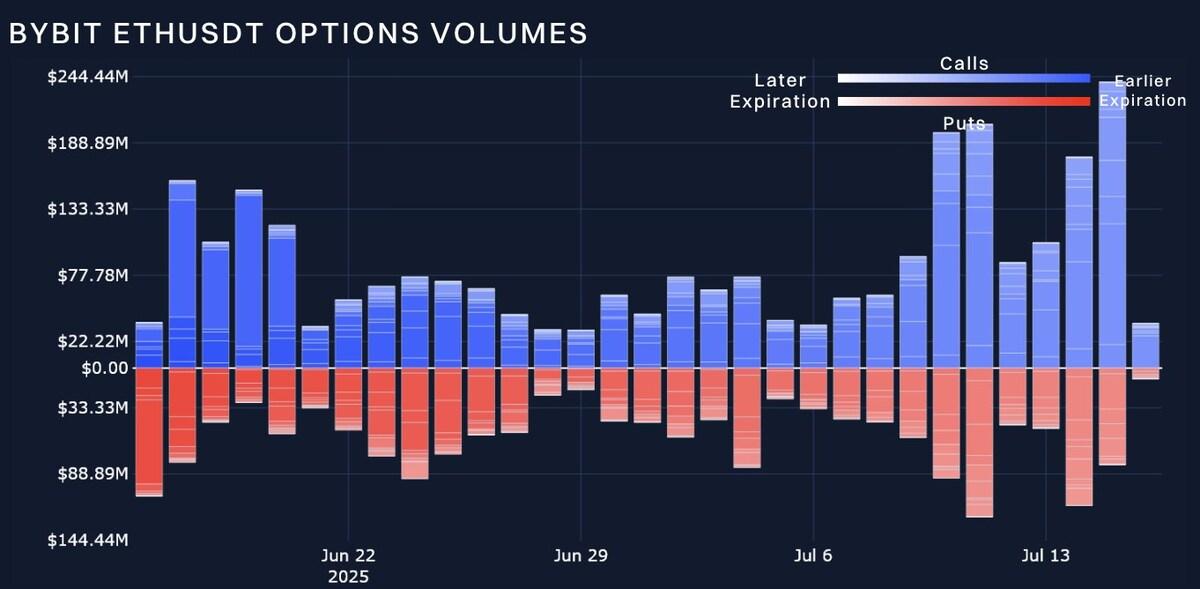The cryptocurrency exchange Bybit has grown rapidly since its founding in 2018, and its workforce now reflects that acceleration. In recent years, Bybit’s expansion into new jurisdictions and product lines has required large hiring drives and operational scaling, for example, adding customer-support & compliance staff as it obtained its EU licence. These moves matter not only for Bybit’s business but also for the broader crypto-finance sector, where firm size can influence regulatory risk, product trust, and market positioning. Below, we dive into key statistics and insights about Bybit’s workforce today.
How Many People Work At Bybit?
- Approximately 2,400–2,500 employees as of mid-2025 across global locations.
- Only 31% of employees would recommend Bybit to a friend, indicating modest internal sentiment.
- Global headquarters moved to Dubai, offering a new regional hub for staff.
- Bybit received a European MiCAR licence and is establishing a European office in Vienna.
- Bybit’s workforce has reportedly grown by approximately 99% over the past year, according to Growjo’s employee growth estimate.
Recent Developments
- The company launched its 2025 strategy in March 2025, emphasizing global staffing for product, compliance, and growth teams.
- Bybit secured the EU MiCAR license in June 2025, becoming one of the first global players licensed under this regulation.
- The licensing process supports Bybit’s plan to hire over 100 employees in its new European operations headquartered in Vienna.
- Bybit opened its global headquarters in Dubai with an office space of 16,000 square feet for global staff coordination.
- The company advertises open positions in the UAE, Austria, Malaysia, and remote roles, indicating geographic hiring expansion.
- Roles like Bybit Card Operations Specialist in Dubai show expansion into fintech-adjacent product domains.
- Continued global regulatory push and expansion in Europe and the Middle East imply that Bybit’s staffing needs will stay elevated throughout 2025.
- Bybit’s global user base stands at around 15 million users, supporting its rapid growth and operational scaling.
Bybit ETHUSDT Options Volume Highlights
- Bybit’s ETHUSDT options volume peaked at over $240 million in mid-July 2025, marking the highest trading activity of the observed period. The surge reflected strong market interest and speculative positioning in Ethereum options.
- Call options dominated most trading sessions, consistently exceeding put volumes by 30–40% across multiple weeks. This trend suggests a prevailing bullish sentiment among Bybit traders.
- Around June 22–25, 2025, total daily volume reached roughly $130 million in calls and $85 million in puts, showing heightened short-term positioning ahead of monthly expiry dates.
- During late June, volumes moderated to about $75–85 million in calls and $55–65 million in puts, signaling a brief consolidation in trader activity before the next surge.
- Early July 2025 saw a sharp uptick in put option volumes exceeding $120 million, likely due to hedging amid Ethereum price uncertainty. This reflected growing caution among traders.
- Later-expiration contracts accounted for a larger share of both calls and puts throughout the period, indicating traders were extending exposure to longer-term ETH movements.
- Mid-July 2025 brought a second major spike, with calls alone surpassing $200 million. This aligns with market optimism as Ethereum’s volatility drew more speculative interest.
- Overall, Bybit’s ETH options market activity doubled from late June to mid-July, showcasing growing participation and deeper liquidity in Ethereum derivatives trading.

Bybit’s Current Team (Key People)
- Ben Zhou – Founder & Chief Executive Officer. As the company’s co-founder, he continues to steer Bybit’s overall vision and global expansion.
- Helen Liu – Promoted to Co-CEO in 2025 after serving as COO. Her role covers operational leadership and regulatory scaling.
- Chris Aruliah – Head of Institutional (appointed September 2024). Charged with growing Bybit’s institutional client services and partnerships.
- Rockman – Former CTO who stepped down mid-2025, signalling a shift in Bybit’s tech leadership and infrastructure strategy.
- Roland Gollenbeck – Managing Director, Austria; selected to lead Bybit’s European regional operations as the firm pursues its EU licensing ambitions.
- Shak Shahrul – Executive Director; listed among Bybit’s leadership team as part of its Asia-Pacific growth unit.
- Yuliya Anisimova – Identified as a CEO-level executive in some databases; her exact remit is regionally focused, reflecting Bybit’s multi-jurisdiction expansion.
Global Offices and Geographic Distribution
- Bybit’s global headquarters is located in Dubai, UAE, occupying 16,000 sq ft for global staff coordination.
- The company opened a European headquarters in Vienna, Austria, after obtaining its MiCAR licence in 2025.
- Job listings reveal open positions in Abu Dhabi, Malaysia, Singapore, Austria, and remote roles, indicating a wide geographic reach.
- Bybit’s careers site promotes hiring talent “across the globe” to build a trusted ecosystem with transparency and reliability.
- Previously, Bybit’s main hub was in Singapore, with additional offices in Hong Kong and Taiwan.
- The employee directory showed Bybit staff presence across 6 continents as of mid-2025.
Bybit Asset Allocation by Strategy
- USDT Strategy holds 69% of Bybit’s total AUM, making it the platform’s dominant investment focus. This shows a strong investor preference for stablecoin-based and low-volatility strategies.
- BTC Strategy accounts for 26% of total managed assets, reflecting sustained confidence in Bitcoin-centric trading and yield programs.
- Option-Linked Strategy represents 5% of AUM, a smaller but high-risk, high-reward segment focused on volatility-driven and derivative-linked products.
- Overall, Bybit’s AUM is heavily skewed toward stable assets, with nearly two-thirds concentrated in USDT strategies, underscoring a risk-averse investor base despite rising derivative activity.

Workforce Demographics
- Bybit has an average employer rating of 2.8/5 based on 274 Glassdoor reviews.
- “Diversity, Equity & Inclusion” scores around 2.4/5, and “Work/Life Balance” is rated about 1.9/5.
- Most employees work in product, engineering, and operations, with a focus on tech and support functions.
- High turnover rates were noted in junior roles, skewing the demographic toward younger employees.
- Bybit’s rapidly growing workforce since 2018 suggests a millennial and Gen Z-heavy composition.
Hiring and Recruitment Trends
- Bybit lists over 240 open roles in the UAE, Austria, Malaysia, and remote positions as of mid-2025.
- The company is actively hiring for roles like Card Operations Specialist in Dubai and MiCAR Compliance Associate in Vienna.
- Major hiring was paused during the 2022-2023 crypto winter and resumed robustly by 2024-25 in growth areas.
- Recruiting focus shifted from trading-engineering to compliance, security, localization, and regulatory operations.
- Many job listings emphasize being “remote-friendly,” supporting Bybit’s global talent acquisition strategy.
- After securing the European MiCAR license in 2025, Bybit ramped up hiring in Europe, planning 100+ hires in Vienna.
Departmental Breakdown of Bybit Employees
- Engineering and product roles comprise around 40% of Bybit’s workforce.
- Compliance, legal, and regulatory operations roles have increased to about 25% of staff due to European expansion.
- Customer support functions make up roughly 15% of employees, focused on multilingual service.
- Marketing and growth roles represent an estimated 8% of the workforce, reflecting a slight contraction.
- Risk management and security teams expanded by 30% post-February 2025 hack.
- Finance, corporate services, and HR comprise about 12% of total employees, growing more slowly.
- Europe-based compliance and AML roles increased by over 20% in 2025 job listings.
- Bybit’s departmental shift favors operational support and risk over pure growth functions.
- Operations and engineering combined represent approximately 65% of the total staff, signaling a core business focus.

Layoffs and Workforce Reductions
- Bybit announced a workforce reduction of up to 30% in June 2022 due to a deepening bear market.
- The layoffs aimed to remove overlapping functions and create more agile, smaller teams.
- A second round of job cuts was planned in December 2022, following the initial reduction.
- Layoffs affected multiple departments rather than targeting a single function.
- Reductions represented a strategic shift from rapid growth to cost control and operational efficiency.
- Employee reviews noted increased workloads and leaner teams post-layoffs.
- The 30% reduction is the last publicly reported workforce cut figure.
Year-on-Year Employee Growth Rate
- Given the 2022 layoffs of about 30%, that places an adjusted base around 1,400 post-cut.
- Hiring in 2023-24 focused on regulatory and compliance roles, which grow more slowly than engineering, moderating total growth.
- The reduction in 2022, followed by measured expansion, suggests a two-phase pattern: contraction then strategic rebuilding.
- The rebound from a 30% cut to higher headcount shows effective workforce rebuilding and hiring discipline.
Comparison With Competitor Employee Counts
- Bybit has approximately 2,400-2500 employees.
- Coinbase reported 3,772 employees in 2024.
- Crypto.com has around 7,000+ employees as of early 2025.
- OKX lists over 5,000 employees worldwide in 2025.
- Bybit is smaller than the largest exchanges but sizable for its niche and stage.
- The difference reflects Bybit’s selective regional and product focus.
- Workforce size varies by regulatory scope, region, and product diversity, not only by user volume.
- Competitor staffing offers context to Bybit’s scale, cost structure, and strategy.
- The upper estimate still places Bybit ahead of many smaller exchanges, indicating strong growth.

Bybit Private Wealth Management Staffing
- Bybit is expanding its wealth management and institutional client services with new hiring initiatives as of 2025.
- Public staff numbers for this vertical are not disclosed, suggesting a small but strategic team.
- Roles in “Institutional Sales & Private Wealth” appear in Singapore and Europe.
- Wealth management hiring includes relationship managers and compliance specialists, aligning with regulatory requirements.
- MiCAR-related licensing supports the expected annual growth of over 15% in private wealth management staffing.
- This unit likely represents less than 5% of Bybit’s total headcount, reflecting early-stage development.
Security, Compliance, and Risk Team Data
- Job listings for security and compliance roles have grown sharply, with a 50% year-over-year increase.
- Compliance and regulatory positions rank among the fastest-growing categories internally.
- Many new security and compliance hires are based in Europe and the Middle East.
- Post-breach scrutiny drove sector-wide increased hiring for security functions.
- Risk teams have expanded in line with Bybit’s global office footprint and licensing needs.
- Security and compliance roles have higher-than-average salaries, accounting for 15-20% greater employee costs.
Frequently Asked Questions (FAQs)
Growjo estimates that Bybit’s employee count grew by 99% over the previous year.
Bybit’s workforce is located across 6 continents.
Bybit has approximately 2,400-2500 employees worldwide.
Conclusion
Bybit has scaled its workforce. The staffing level places it among the mid-sized global crypto exchange operators. At the same time, Bybit’s regional office strategy, expanding into Europe and the Middle East, and growing investments in compliance, security, and private-wealth staffing suggest it is entering a more mature operational phase.
For U.S.-based readers, the lack of a significant U.S. employee footprint and limited public diversity disclosures represent areas to monitor. In short, Bybit appears to be evolving from rapid expansion toward disciplined global operations, and tracking its headcount growth, departmental mix, and geographical staffing will offer valuable insight into how the firm positions itself among its peers.


























































